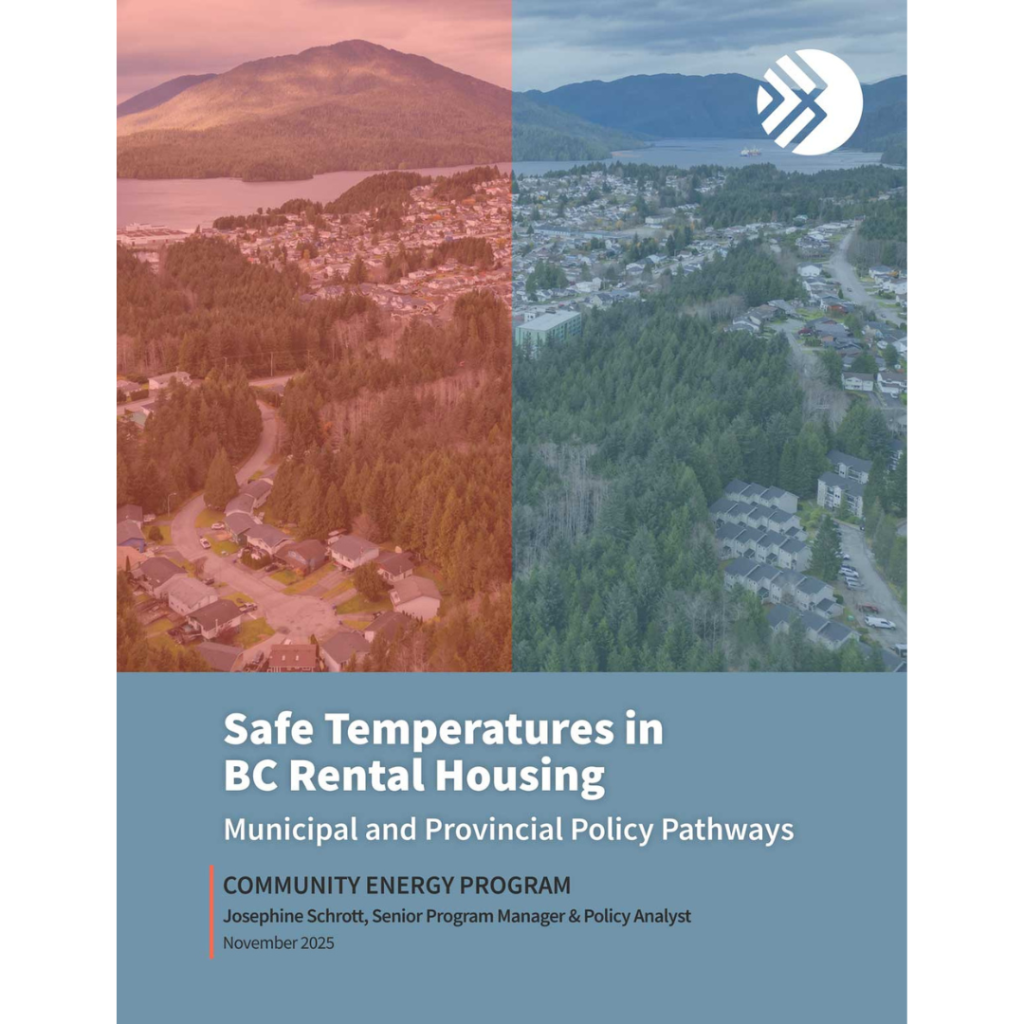Executive Summary
Dangerous indoor temperatures are an increasingly urgent problem. While cold snaps and chronic underheating issues continue to impact people in their homes, summer temperatures are increasing. Heatwaves and wildfires are among the top three climate hazards that households in British Columbia are facing. Temperatures will continue to rise, as will the associated healthcare, economic, and social costs.
Extreme heat precipitates not only immediate medical emergencies, making the 2021 Pacific Northwest heat dome the deadliest weather incident in Canadian history, but also causes heat-related injuries that can persist for years. These devastating impacts can be mitigated by ensuring people can maintain safe temperatures in their homes. Additionally, heat can overlap with increasingly common wildfire smoke events, worsening air quality. These events make cooling, ventilation, and air filtration systems a requirement to avoid adverse health impacts. However, renter households are significantly constrained in their ability to adapt and improve climate resilience due to limited agency and power.
This report outlines potential policy pathways to improve the thermal safety of renters in their homes within the province of British Columbia (BC), Canada, focusing on:
- Small residential buildings (three storeys or less, <600 sqm footprint; corresponding to Part 9 of the BC Building Code), including small multi-unit apartment buildings, row homes, semi- and single-detached homes
- Electrification and low-carbon resilience
- Policy opportunities for BC municipalities, especially Standards of Maintenance bylaws
- Provincial policy opportunities
We expect that in BC, electrification of space heating and cooling by means of heat pumps is sufficient to ensure thermal safety in most Part 9 buildings. Passive cooling and energy efficiency measures should be pursued prior to or alongside mechanical cooling to increase resiliency and reduce energy demand and costs, but usually, only mechanical cooling can guarantee bringing overheated hours down to zero. Therefore, the policy pathways considered address not only temperatures and cooling but also building decarbonization and energy performance. Further, we consider the potential impacts of these policies on renters, including the cost of rent, utility bills, and the availability of housing. Approaches for tracking, protecting, and improving the safety of rental housing are outlined to mitigate adverse consequences.
Policy pathways are detailed, along with their status (as of fall 2025) in BC, and examples from other jurisdictions. The assessed policies are:
- Right to cool – prohibiting unreasonable cooling bans
- Rental Standards of Maintenance (SoM) – specifying standards for healthy and safe housing
- Rental licensing – to fill data gaps, inform decision-making, and implement/enforce standards
- Retrofit code and existing buildings renewal – bringing existing buildings up to better standards
- Equipment standards – to ensure improvements in space and water heating equipment at the time of replacement
- Rental energy performance standards – to increase energy efficiency in rental housing
- Energy and adaptation labels and ratings – to make visible the invisible elements of a home’s efficiency and resilience, providing better transparency of costs and risks for both buyers and renters
We explore and recommend the following policy actions:
Provincial policy:
- Immediate actions:
- Update the Residential Tenancy Act, Strata Property Act, and Manufactured Home Park Tenancy Act to include a right to cool
- Update the provincial Standards of Maintenance (SoM) guide and sample bylaw to address health and safety issues stemming from common climate hazards
- Expand short-term rental licensing to all rental units
- Longer-term actions:
- Implement Highest Efficiency Equipment Standards (HEES) for space and water heating
- Require energy rating/disclosure, and expand to include climate adaptation
- Update the Residential Tenancy Act, Strata Property Act, and Manufactured Home Park Tenancy Act with requirements to address survival of high-priority climate hazards.
- Develop an alterations code/existing buildings renewal strategy
Municipal policy
- Adopt Standards of Maintenance bylaws
- Include a right to cool (including active and passive cooling, ventilation, air filtration)
- Include a minimum and maximum temperature limit for rental units
- Ensure enforcement options are available
- Pursue complementary housing, energy retrofit, community planning, and emergency preparedness actions
We detail the powers and tools that BC municipalities have to develop and strengthen thermal safety policies locally. The appendices provide further information on the Canadian and BC housing, mitigation, and adaptation policy context (Appendix A); an overview of municipal Standards of Maintenance in BC (Appendix B); and additional resources on the topics covered in this report (Appendix C).


